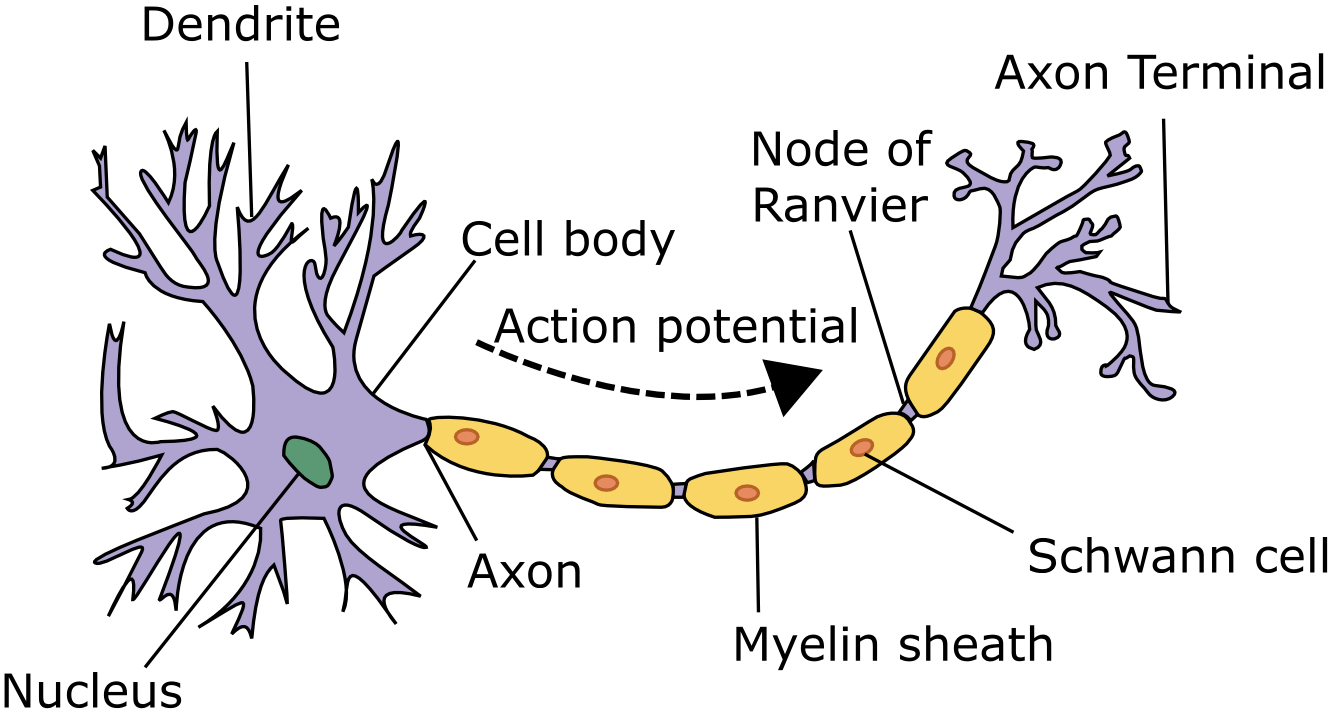The building block of the nervous systems is the neuron (or nerve cell), depicted in figure 2.1.
It receives stimuli or `input' (e.g. from another nerve cell) at its dendrites. Inputs can be exitatory (additive) or inhibitory. Once a certain threshold is reached, the neuron will propagate an action potential through its axon. Action potentials speeds range between 0.55 m/s and 111 m/s [EA03, p. 1] (perhaps up to 120 m/s [KW01, p. 132], 100 m/s [Ham03, p. 61]). The myelin sheets cover the axon to minimize the amount of energy needed (and corresponding ion influx and efflux) to propagate the action potential at high speeds. Finally, the action potential will release neurotransmitters at its axon terminals which may be connected to subsequent neurons or to the muscles.
Figure 2.1:
A neuron covered in myelin, conducting an action potential in the rightward direction. Adapted from: Dhp1080 on Wikimedia (originally adapted from: `Anatomy and Physiology' by the US National Cancer Institute's Surveillance, Epidemiology and End Results (SEER) Program).
|
|
Also, the interconnectedness is very high; in the order of  synapses on average per neuron [BK92, p. 7].
There are various types of neurons, but they respect the general features mentioned above. The cells in the neuronal population have varying types of ``transistor'' properties. Cells in the cerebellum are fine-tuned and worked out for motor effectors, cortical cells are pyramidal and have their own characteristics and so do `association neurons' in the thalamus.
synapses on average per neuron [BK92, p. 7].
There are various types of neurons, but they respect the general features mentioned above. The cells in the neuronal population have varying types of ``transistor'' properties. Cells in the cerebellum are fine-tuned and worked out for motor effectors, cortical cells are pyramidal and have their own characteristics and so do `association neurons' in the thalamus.
Erik de Bruijn
2007-10-19
